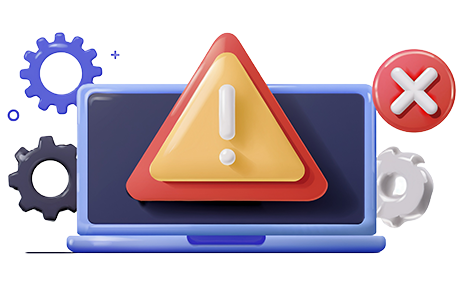Digital accessibility, when done right, is designed to improve the experience for everyone, not just people with disabilities. But yes, there are cases where accessibility features can impact website performance. Those cases are primarily due to improper execution, not the principles themselves.
Media, Captions, and Transcripts
Captions and transcripts make videos more accessible, but uncompressed files or unoptimized streaming can drag down performance. Without proper compression, encoding, or lazy loading, videos eat up bandwidth.
Use of Web fonts
Web fonts can significantly affect website performance in a couple of ways:
- Downloading each web font from a server increases the total file size, which can slow down your website's loading time.
- The volume of font files called up during page loading can impact metrics like Largest Contentful Paint (LCP) and Cumulative Layout Shift (CLS), which are crucial for SEO and user experience.
You can improve the load time of your website by using pre-installed system fonts. Also essential is choosing web-safe fonts and using fewer fonts.
Overly Complex ARIA
Every ARIA attribute you add creates more work for the browser and screen readers. If you’re layering on roles, states, and properties that aren’t needed, that can slow down rendering and make interactions lag and web performance drop. If you build a custom ARIA-driven button or menu instead of just using <button> or <nav>, you’re reinventing the wheel with more code and complexity. Native elements are lighter, faster, and come with accessibility built in.
Accessibility Overlays or Widgets
Accessibility overlays can negatively affect website performance in several ways. Overlays can slow down a website’s load speed. When custom overlays are integrated directly into a site’s core code, they add even more drag on performance.
Many overlays rely on third-party servers for hosting, which also increases the risk of slower load times and reduced site speed. At the end of the day, overlays are often just a band-aid, failing to address the real accessibility issues.
When Accessibility Goes Right
Clean, well-structured code that uses native, built-in HTML elements and attributes loads faster, reducing the time it takes for the browser to download and execute scripts and resources. When possible, use native, built-in HTML elements and attributes over custom elements.
Minimize HTML, CSS, and JavaScript codes by breaking down complex scripts into smaller, asynchronous chunks and leveraging code minification and compression techniques.
Remember. Accessibility doesn’t drag down performance; improper implementation and execution do. If your site performance takes a hit, it often signals that features are being overbuilt or stacked onto outdated infrastructure.
Resources
- Do accessibility overlays hurt website performance?
- Factors affecting website performance
- How do fonts affect your website’s performance?
- Website Performance and its Impact on Accessibility
- Accessible Coding 101: What It Is, Examples, Resources
A human author creates the DubBlog posts. The AI tool Gemini is sometimes used to brainstorm subject ideas, generate blog post outlines, and rephrase certain portions of the content. Our marketing team carefully reviews all final drafts for accuracy and authenticity. The opinions and perspectives expressed remain the sole responsibility of the human author.

